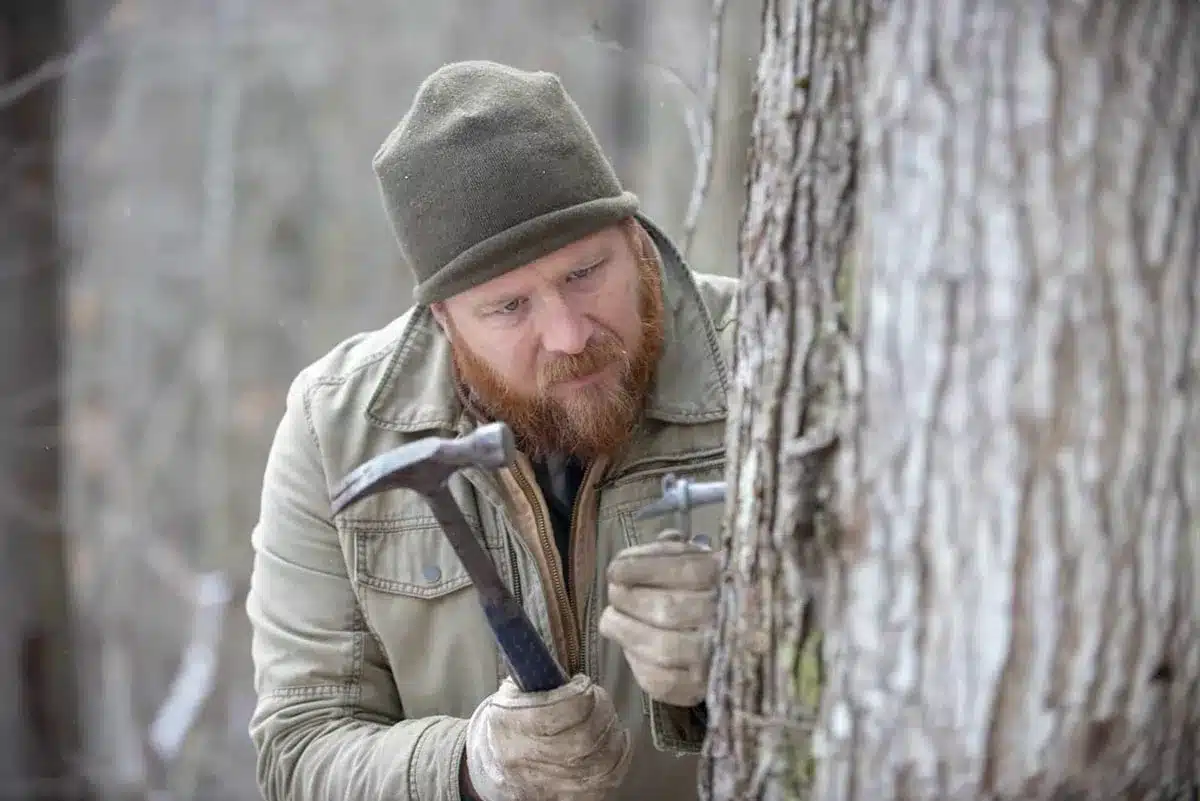You’ve decided to make maple syrup this year and you’ve determined that it’s time to tap your trees. Great! Here’s how.
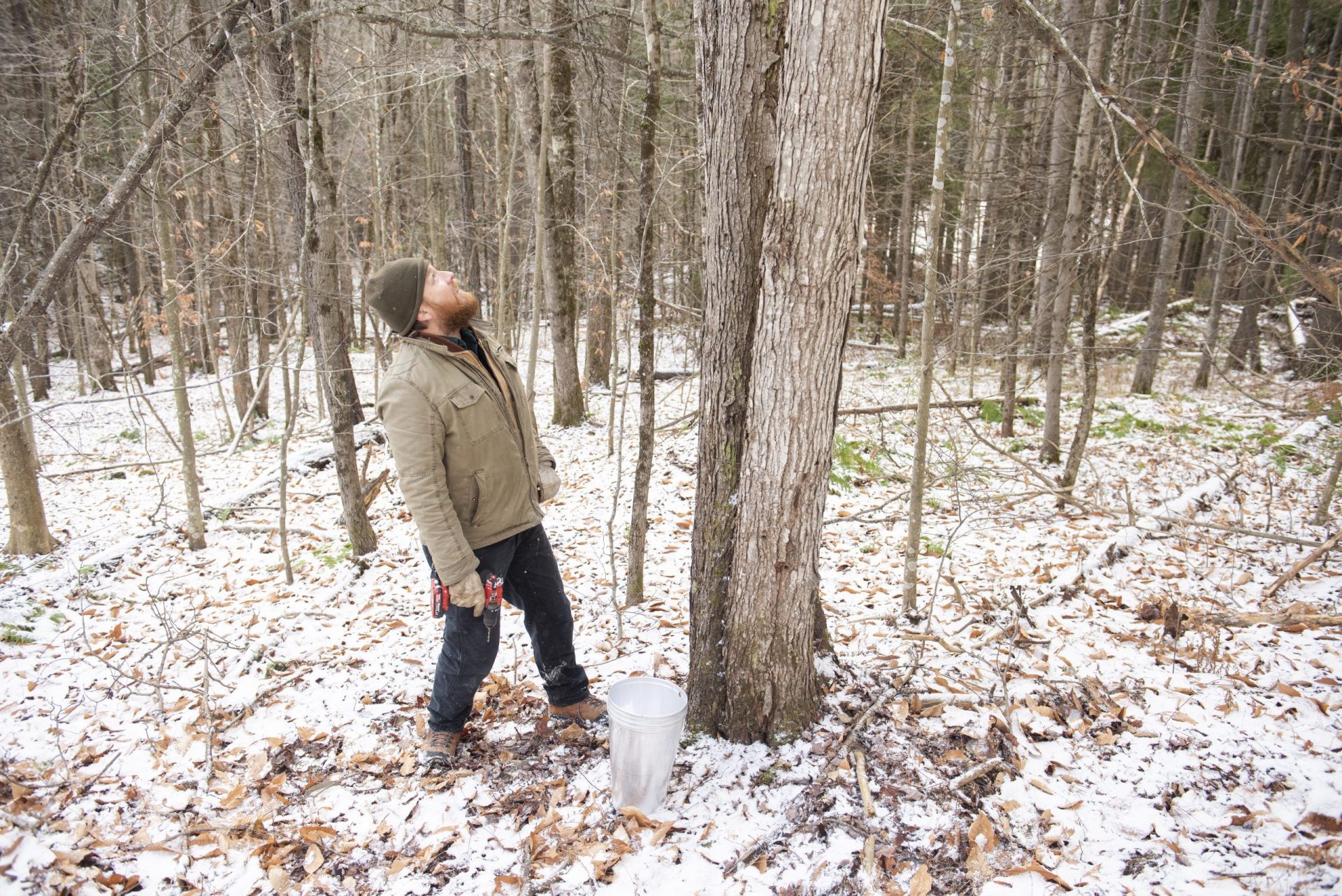
Evaluating the size, health, and shape of a maple tree are important first steps when tapping.
As long as you’ve identified your maple trees and determined it’s time to tap, you’re ready to go! All you need to do now is get a hold of some simple tools and equipment and you are ready to tap.
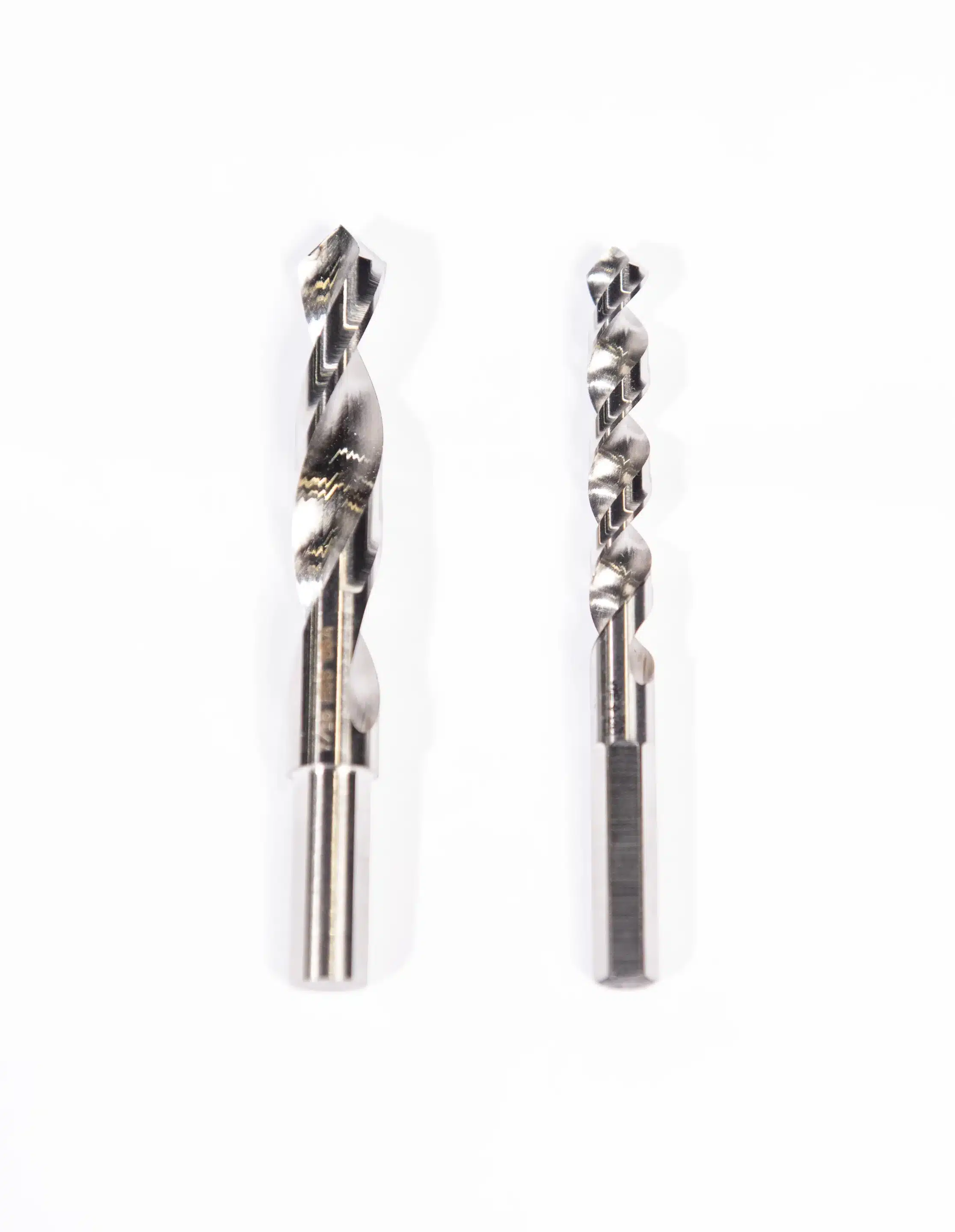
7/16″ and 5/16″ Drill Bits
Drill & Tapping Bit
First, you need a drill with a 5/16″ or 7/16″ bit. You can use a cordless power drill or a hand drill – also called a brace. The power drill has the advantage of being a lot faster, whereas the brace is more . . . romantic. . . . if you’re into that sort of thing. The brace also has no carbon footprint. (For those of us not into romance.)
A regular bit will do, or you can invest in a “tapping bit,” of either size. Tapping bits are easier to use and make a nice, clean hole. Choose the bit size that matches the spiles you are going to use (see below). You can find a 5/16″ or 7/16″ tapping bit here.
Spiles
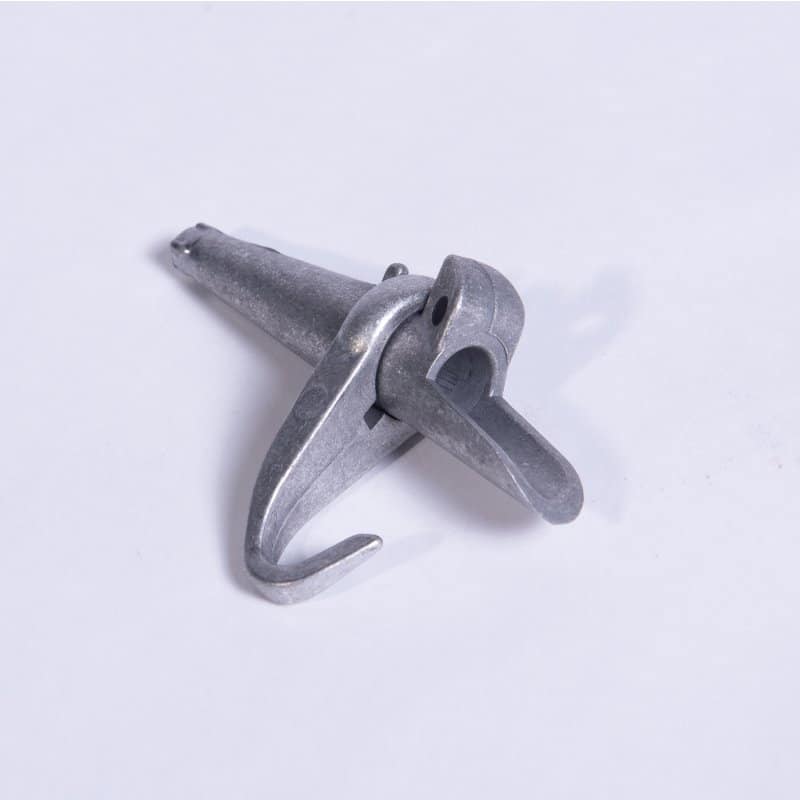
Aluminum Spile
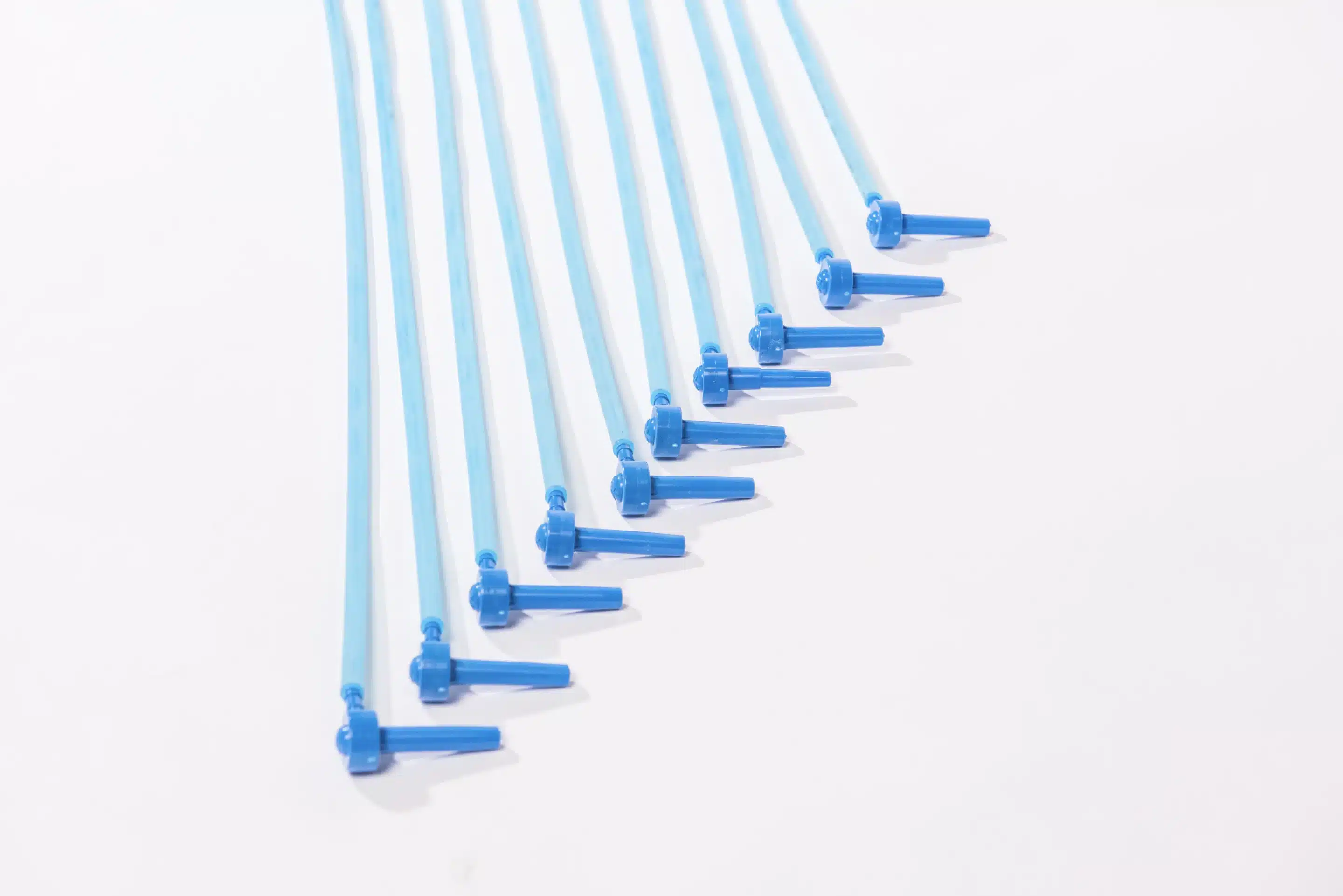
Plastic Spiles
Second, you need 5/16″ or 7/16″ spiles – also called “taps.” Spiles are the spouts you hammer into the tree to direct the sap out of the tree. You can then collect the sap into a bucket or other sap-collection container of your choice.
New spiles are widely available in both sizes and come in metal and plastic. If you are in possession of used or even antique spiles, or looking for some (again with the romance!), chances are they are going to be of the larger size. You can find new metal spiles or plastic spiles here.
Sugarmakers have different opinions about what size tap is best and whether to use plastic or metal spiles. We use and sell 7/16″ bits and new metal spiles because metal is more durable than plastic. Do research if you enjoy it, but the important thing is to just get started, so don’t feel like you have to sweat the small stuff, here. This is supposed to be fun. Find some taps that are in your price range, and go for it!
You will need one spile per every tap you are going to make. A tree that is from 12 to 18 inches in diameter can support one tap. Trees larger than 18 inches in diameter can take two taps. Putting more than two taps in a tree is not recommended.
Tapping Hammer

Tapping Hammer
Third, you will need a hammer for tapping the spile into the tree after you drill a hole. You can use a regular old hammer or a specialized tapping hammer with spile remover. These are very light and easy to carry around your sugarbush. We’ve also been known to use a mallet to tap in our spiles as well!
Buckets
And finally, you need lidded buckets or other food-safe containers to collect your sap. You can use any food-safe containers like clean plastic milk jugs, water jugs, or 5-gallon buckets. You can attach the buckets to your spile with wire, or use a drop line and leave your container on the ground.
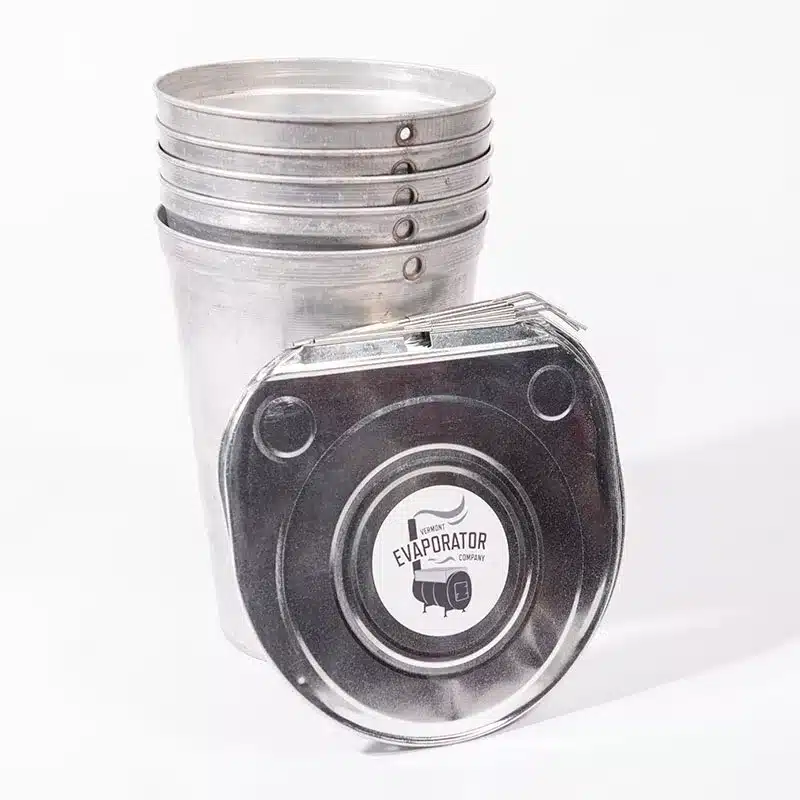
Aluminum Buckets
It is important to note that the old galvanized buckets may contain lead, and it is possible for lead to leach into your sap under certain conditions. If sap is left in the bucket for long enough and temperatures are high enough, the lead may leach out. Our family has used the old galvanized buckets in the past but we are phasing them out.
New metal buckets are typically made of safer aluminum, there are plenty of plastic-bucket options. There is even a bucket made of gray plastic on the market for those of you having a hard time weighing the factors of aesthetics, cost, and function. (Brilliant!)
Where To Tap
Now that you have your stuff, it’s time to get tapping. Proceed to the first tree and choose a height that is both convenient for the driller and collector. Choose a spot that is easy to drill at that moment, but also think about the current depth of the snow. Is the collector going to have to reach over his or her head to collect the bucket when the snow melts?
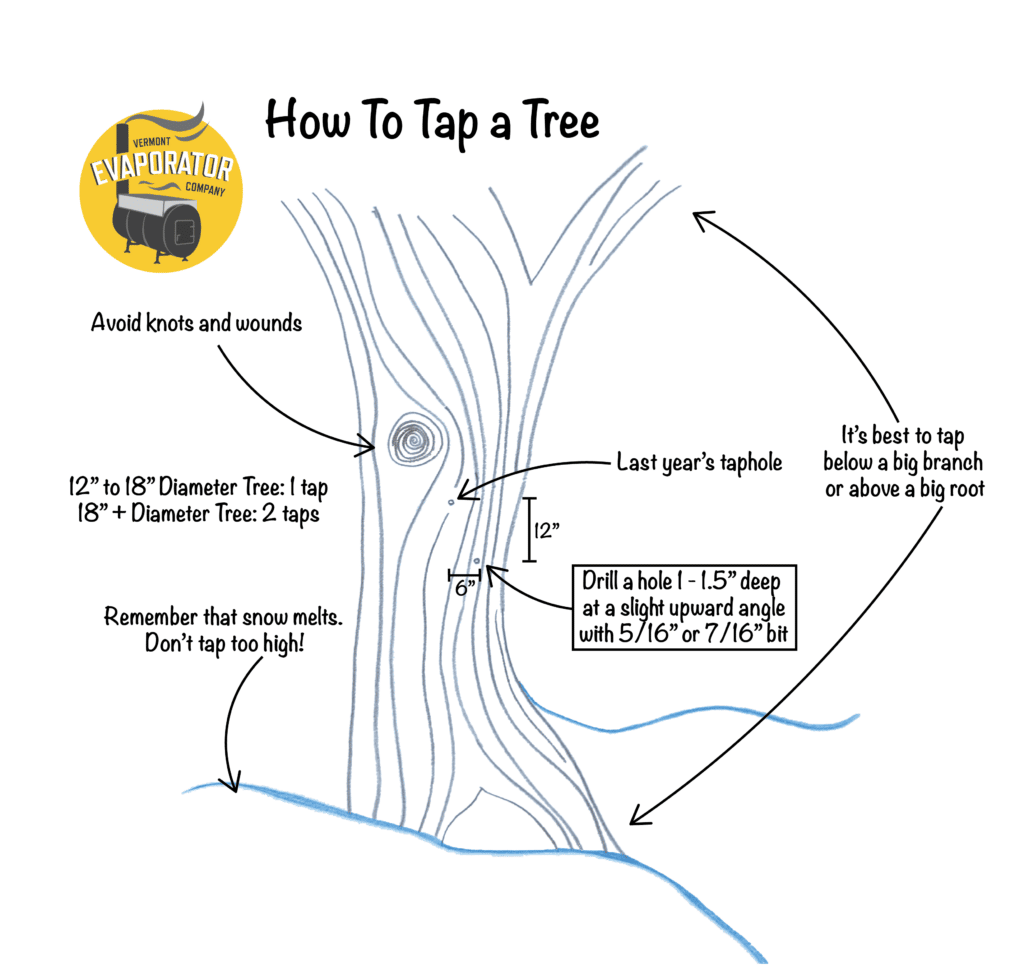
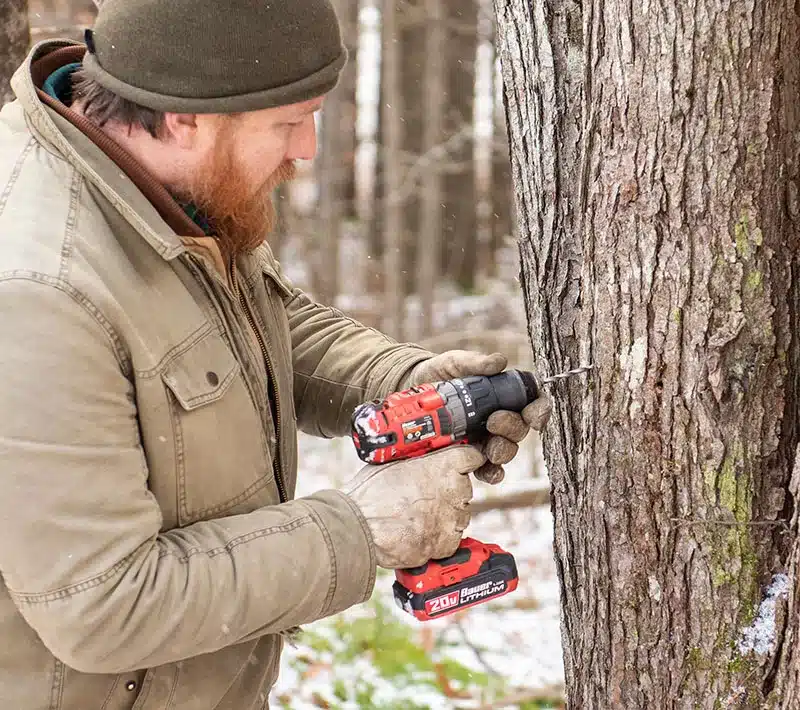
Time to Tap your Maple Trees!
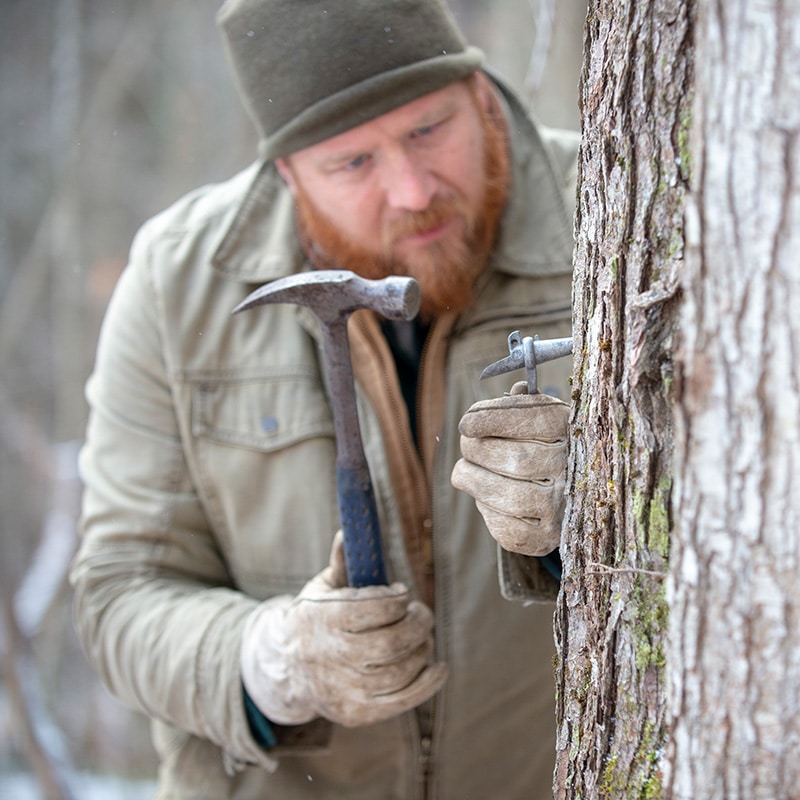
Now all you can do is wait for the sap to run! Check your buckets when temps at night are freezing and days are above freezing. Especially pay attention to those buckets/trees that get lots of sunlight. Those are often the first to run!
Happy Tapping!
FOR MORE INFORMATION ON MAKING YOUR OWN, HOMEMADE MAPLE SYRUP CHECK OUT OUR OTHER HELPFUL HOW-TO BLOGS:
How to Filter Homemade Maple Syrup
How to Store Your Homemade Maple Syrup
A note on galvanized sap buckets: We’ve stopped using galvanized buckets since these images were taken. Galvanized buckets may contain lead, which may leach into your sap and be hazardous to your health.

